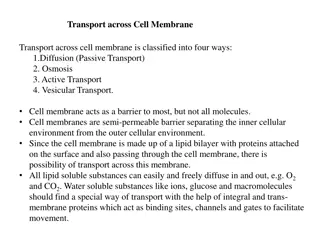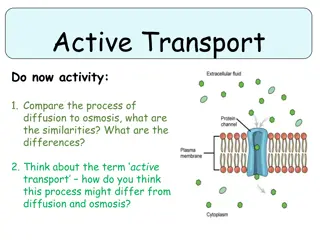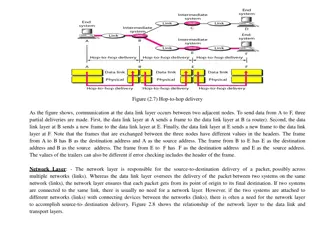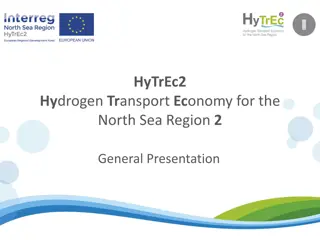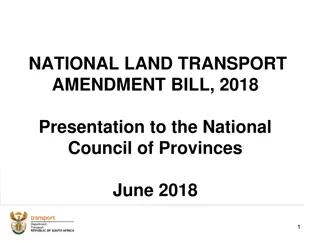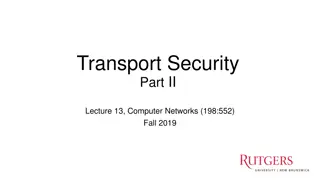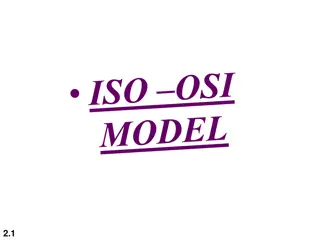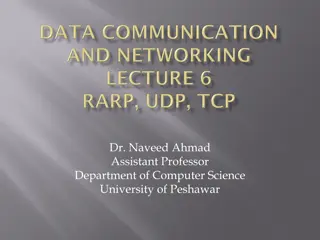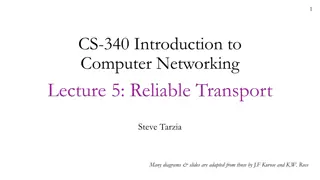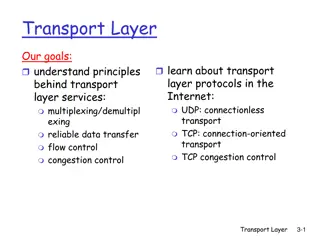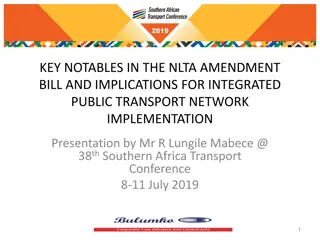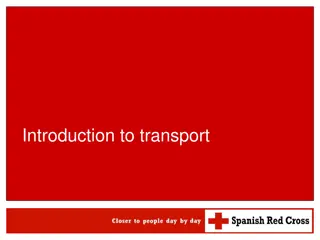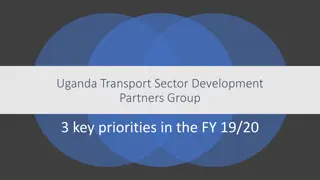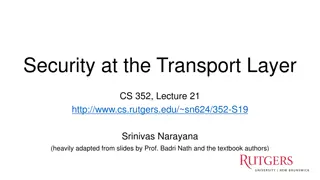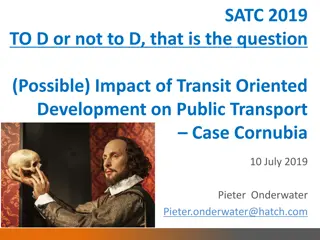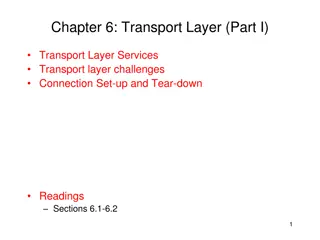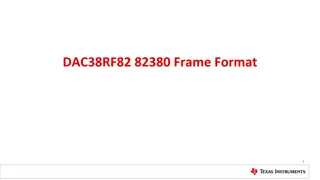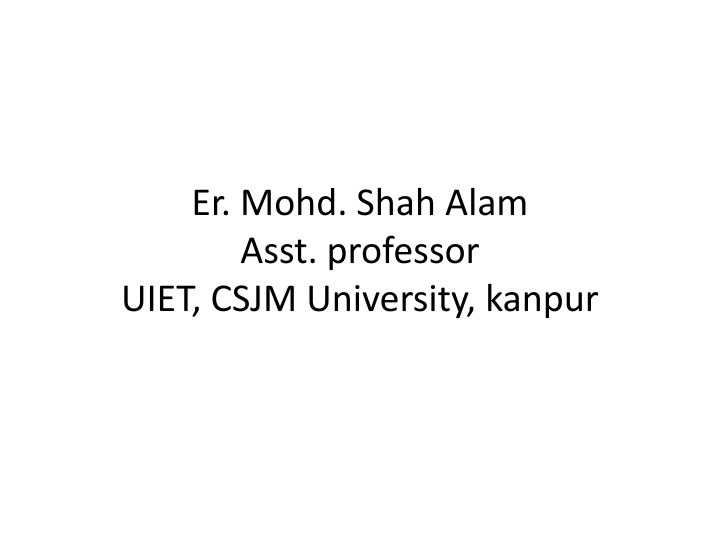
Understanding Transport Layer in Computer Networks
Learn about the transport layer, its functions, and how it facilitates process-to-process delivery in computer networks. Explore topics such as packetizing, connection control, addressing, and port numbers. Understand the role of sockets in process-to-process delivery and the concept of multiplexing and demultiplexing in the transport layer.
Uploaded on | 0 Views
Download Presentation

Please find below an Image/Link to download the presentation.
The content on the website is provided AS IS for your information and personal use only. It may not be sold, licensed, or shared on other websites without obtaining consent from the author. If you encounter any issues during the download, it is possible that the publisher has removed the file from their server.
You are allowed to download the files provided on this website for personal or commercial use, subject to the condition that they are used lawfully. All files are the property of their respective owners.
The content on the website is provided AS IS for your information and personal use only. It may not be sold, licensed, or shared on other websites without obtaining consent from the author.
E N D
Presentation Transcript
Er. Mohd. Shah Alam Asst. professor UIET, CSJM University, kanpur
Advance Computer Networks Transport Layer
Introduction The transport layer is the fourth layer in the internet model. Above it is the application layer and below it is the network layer. This means that transport layer receives services from network layer and provide services to the application layer. Process to process delivery is achieved through a set of function performed by the transport layer.
Transport Layer Duties Packetizing Connection Control Addressing Providing reliability
Process-to-Process Delivery The transport layer is responsible for process to Process Delivery. Addressing At the transport layer, we need a transport-layer address called Port number, to choose among multiple processes running on the destination host. In the internet model, the port numbers are 16 bit integer between 0 and 65,535
Port numbers The client program defines itself with a port number, chosen randomly by the transport layer software running on the client host. This is the Ephemeral port number The internet has decided to use universal port numbers for servers. These are called Well- known port numbers
IANA Ranges The IANA (Internet Assigned Number Authority) has divided the port numbers into three ranges.. Well-known Ports: range (0 to 1023) Registered Ports: range (1024to 49,151) Dynamic Ports: range (49,152 to 65,535)
Socket Addresses Process-to-Process Delivery needs two identifiers, IP address and Port number at each end to make connection. The Combination of IP address and Port number is called socket address
Transport layer. Multiplexing and Demultiplexing
Connectionless versus Connection- Oriented service Connectionless service
Connectionless Service In a connectionless Service, the packets are sent from one party to another with no need for connection Establishment or Connection release The packets are not numbered They may be delayed, lost or arrive out of sequence There is no Acknowledgement UDP is connectionless
Connection-Oriented Service Connection Establishment:- 1. Host A sends a packet to announce its wish for connection and includes its initialization information about traffic from A to B. 2. Host B sends a packet to acknowledge(confirm) the request of A. 3. Host B sends a packet that includes its initialization information about traffic from B to A. 4. Host A sends a packet to acknowledge(confirm) the request of B.
Connection Termination 1. Host A sends a packet announcing its wish for connection termination. 2. Host B sends a segment acknowledging the request of A. After this the connection is closed in one direction 3. When host B has finished sending its own data. It sends a segment to indicate that it wants to close the connection 4. Host A acknowledge the request of B
User Datagram Protocol(UDP) UDP is connectionless, unreliable protocol that has no flow and error control. It uses port numbers to multiplex data from the application layer
User Datagram UDP Packets, called user datagram, have a fixed- size header of 8 bytes.. 1. Source port number (16 bits) 2. Destination port number (16 bits) 3. Total length (16 bits) 4. Checksum (16 bits)
Transmission Control Protocol (TCP) The reliable, but complex transport-layer protocol. Its add connection-oriented and reliability features to the services of IP.
Congestion Congestion in a network may occur if the load on the network(the number of packets sent to the network) is greater than the capacity of the network (the number of packets a network can handle). Congestion Control refers to the mechanisms and techniques to control the congestion and keep the load below the capacity.
Congestion Control Congestion control refers to techniques and mechanism that can either prevent congestion, before it happens, or remove congestion after it happened. In general we can divide congestion control mechanisms into two broad categories: 1. Open-loop congestion control (prevention) 2. Closed-loop congestion control(removal)
Open-Loop Congestion Control Policies are applied to prevent congestion before it happens. In congestion control is handled by either source or destination. these mechanisms,
List of policies that can prevent congestion. 1. Retransmission policy 2. Window policy 3. Acknowledgement policy 4. Discarding policy 5. Admission policy
Closed-loop congestion control 1. Back pressure 2. Choke point 3. Implicit signaling 4. Explicit signaling Backward signaling Forward signaling


